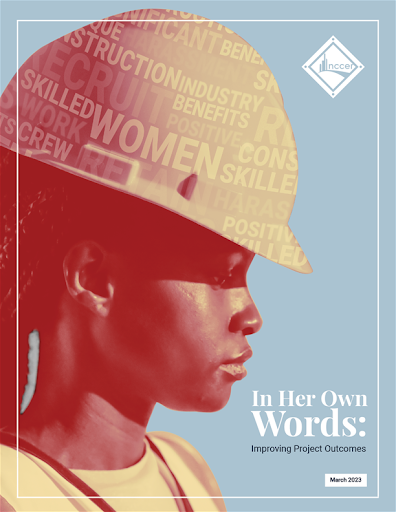Infrastructure
“What do you expect?” isn’t harmless—it’s a red flag waving over every excuse, dismissal, and quiet act of workplace bias we’ve been told to swallow.
The numbers don’t lie—women are still being placed at unnecessary risk simply because they can’t access the right PPE.
When safety data disappers, so does accountability.
For women, pink PPE has long been more than just a color— it’s a symbol of separation.
How a relationship-centered approach to business development has been the key to one company’s growth and success.
Here are two simple steps to making your asphalt company the type of place where women feel safe and excited to be there, and ensuring you don't exclude half the potential workforce.
Today’s reality is that, unless you have an incredibly safe workplace for someone to bring their authentic selves to, you don’t know and probably never will know how many transgender employees you have.
There’s a massive need for broadband technicians to complete what needs to be done in digital infrastructure over the next several years.
New research from the Institute for Women’s Policy Research shows that tradeswomen are less likely to be promoted, retained on core crews, and receive the same technical training as their male counterparts.
Union membership pays significant dividends to women, including higher wages and a narrower wage gap.
Employers in the construction industry must be vigilant in their efforts to protect women from sexual abuse and discrimination in the workplace.
Such extraordinary growth is a blessing for the construction industry, but meeting such demand comes with many challenges as companies push to deploy with speed and at scale while maintaining profit margins.
Change is possible, but the roadblock is execution.
A newly published white paper highlights the unique benefits women bring to the construction workforce, the obstacles they encounter getting in and staying in the industry, and their advice on what contractors can do to recruit and retain more women.
In a truly historic and inspiring move, three Michigan-based tribes collaborated to form Aki Construction LLC
Crew Collaborative is working to launch a nationwide program to bridge the gap between high schools and our industry.
According to Mckinsey, burnout rates are high regardless of gender, but female leaders are burning out at a rate of 42%.
Tennesha Joseph was attracted to urban planning because she wanted to problem solve, design, and impact people's lives, particularly those in marginalized communities.
Steffany Elford made the switch from being a nurse to a concrete delivery professional and never looked back.
While room for diversification remains, many women have already made significant contributions to the energy sector.
This Pathfinder award recipient ensures diversity in product feedback sessions by making sure the women who are affected by new software have a chance to speak.
Learning does not look the same for everyone. Success does not look the same either.
The intersectional feminist city is possible, and within reach.
The Women Building Infrastructure Initiative will accelerate state and local efforts to increase women’s inclusion and equity in construction-trades jobs and apprenticeships.
In addition to having a passion for infrastructure, Rhea Douglas wants to advocate for other international students, especially females studying civil engineering in the US.
High school senior Dylann Volz discovered civil engineering for the first time during Cornell Engineering's CURIE Academy.
Bring Back the Trades is a resource for parents and high school students looking for alternative paths to the traditional four-year university program.
REAL Women in Trucking founder and president, Desiree Wood, consulted on all matters trucking for the new movie “Paradise Highway.”
Before you decide what digital tools are a good fit for your company, you first need to ask yourself what you want to automate and why.
Holding over 15 years of progressive executive experience, Bisa says she never dreamed that the journey to acquiring a company would look the way that it did.



































